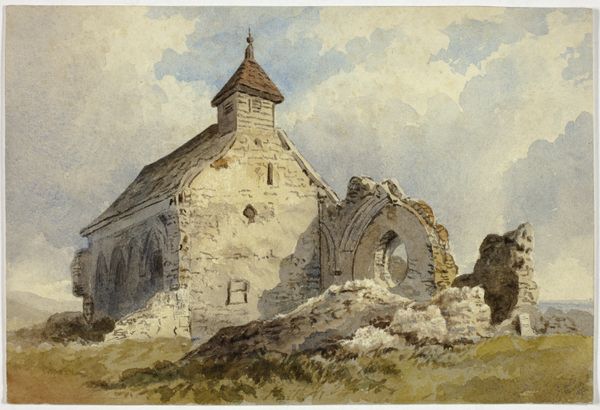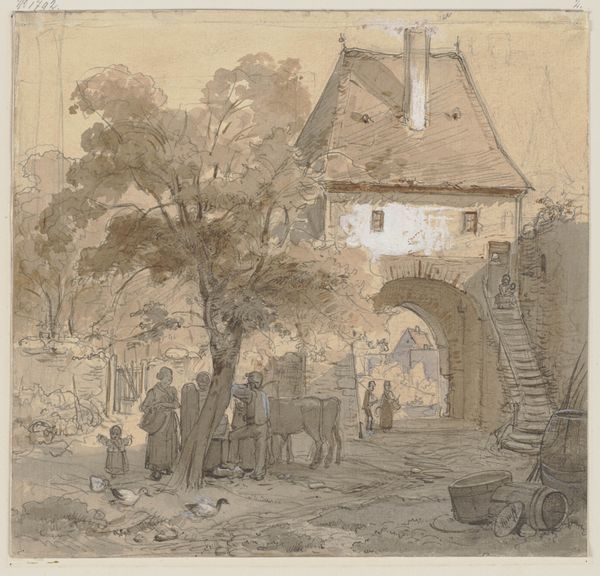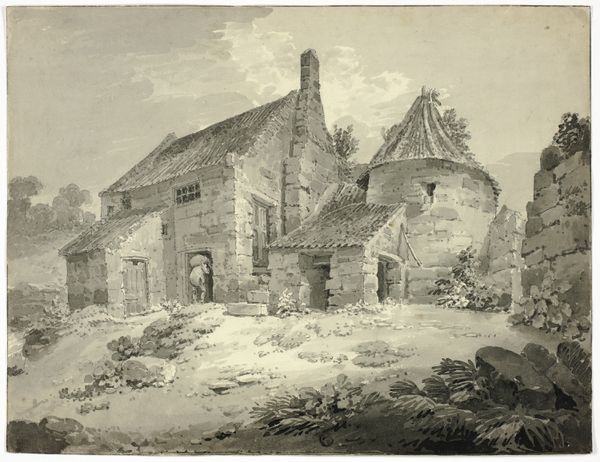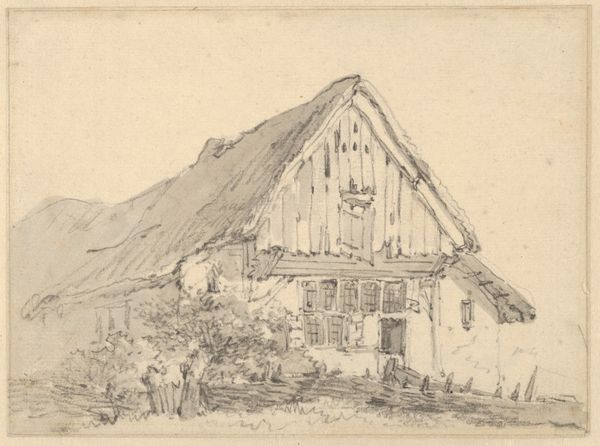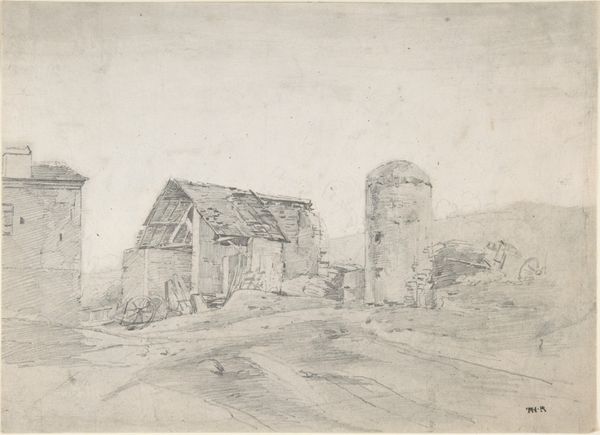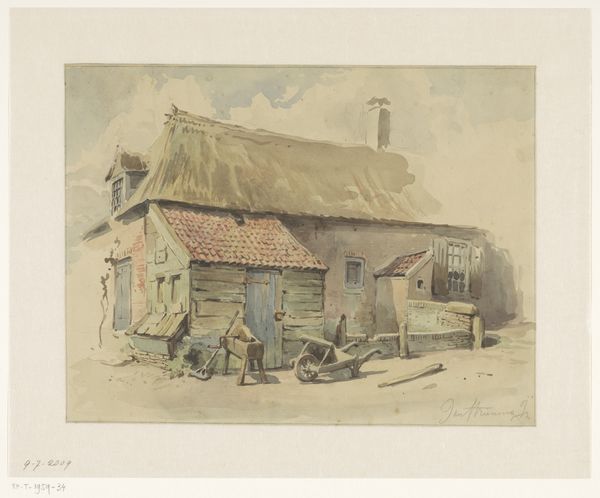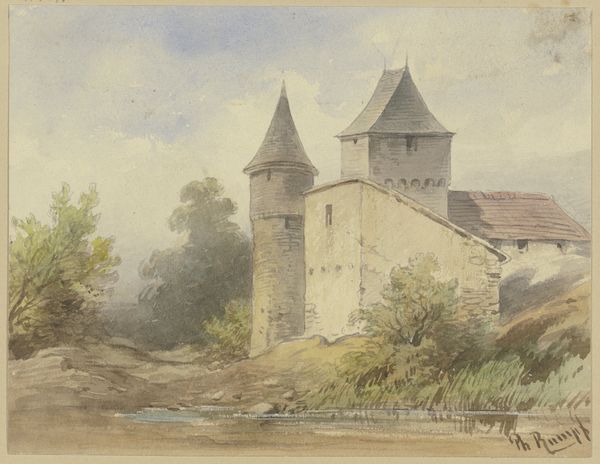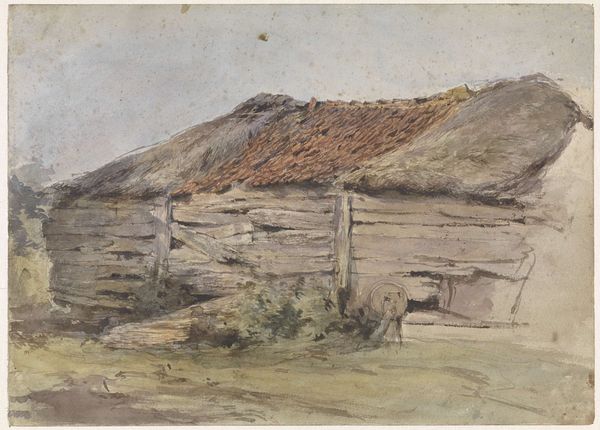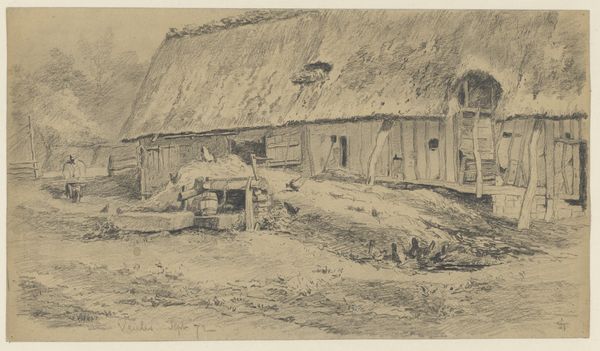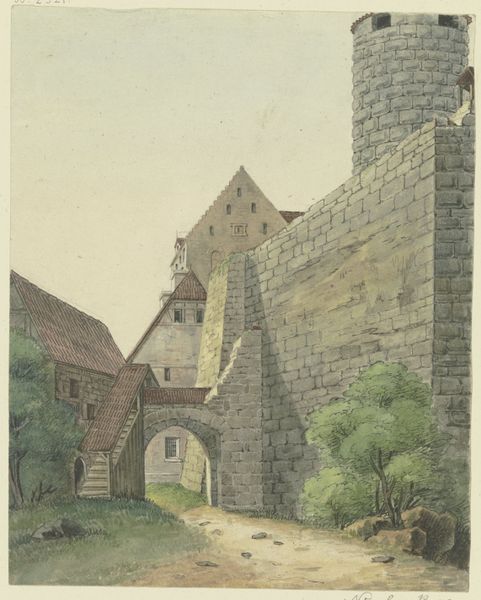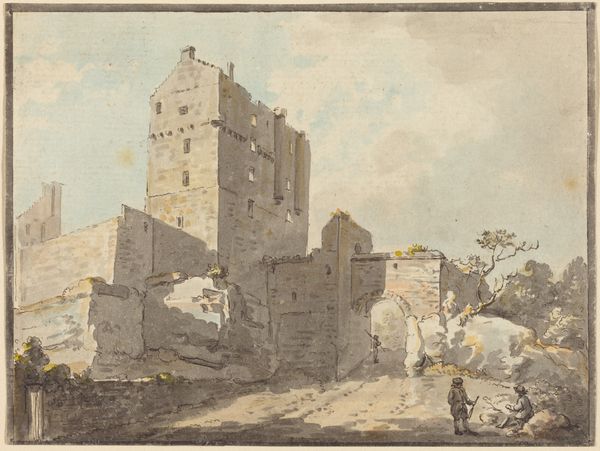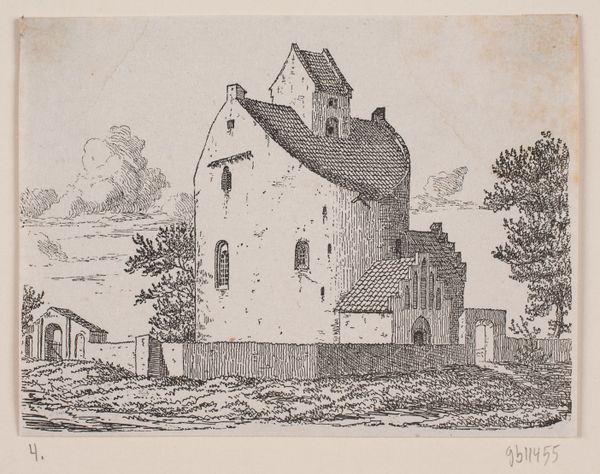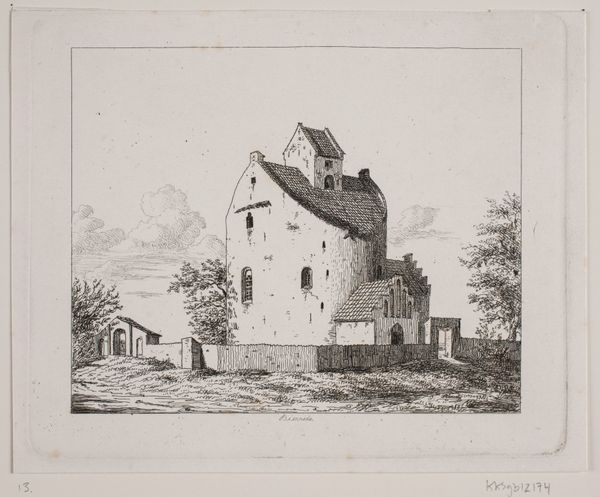
Dimensions: sheet: 9 5/8 x 9 5/16 in. (24.4 x 23.6 cm)
Copyright: Public Domain
Ernst Erwin Oehme created this watercolor titled ‘Watermill’ sometime in the mid-19th century. In it, we see a weathered watermill with a family in the foreground, a slice of rural life captured on paper. But it’s not just a picturesque scene; it reflects deeper currents in 19th-century German society and the art world. Oehme, working in a period of rapid industrialization, presents a contrasting image of pre-industrial labor. The image evokes a sense of nostalgia for a simpler, agrarian past. The location of the family at the forefront in conventional dress emphasizes the enduring human connection to the land. This idealized vision, however, conveniently overlooks the harsh realities often associated with rural life. To truly understand this artwork, we need to look at the art market and the institutions that shaped artistic taste at the time. Archival records, exhibition catalogs, and period publications can help us understand how pieces such as this one were received and what role they played in the broader cultural landscape. Ultimately, art like this tells us as much about the values of the time as it does about the scene it depicts.
Comments
No comments
Be the first to comment and join the conversation on the ultimate creative platform.
